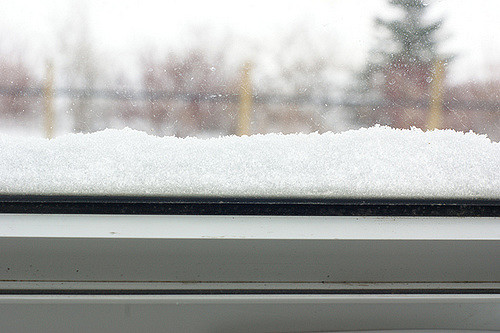
1.
Some hills are harder to sled than others. A slope is needed. Some snow is important. Some hills have trees and those hills are fine to sled down if you have a helmet and your brother in the front of the sled. A sister can also work. A mother or a father or really any member of your family will also do the job. An enemy is best, if you can get one in your sled. Really anyone can provide the adequate cushion. And, if they insist that you sit in the front of the sled, it’s best to find another hill, there are plenty of hills, or better yet suggest that you go down that hill backwards and call that person a coward when they refuse.
2.
I do not care for the straight lines cut by airplanes. Nor does the stubborn directedness of rain and ice appeal to me. I prefer the whimsy of a snowflake. Mosquitoes have whimsy in that they fly in circles and congregate above swamps and people, but I do not care for their purpose. A snowflake has no ulterior motive. A snowflake has no intention. It will land on the ground or on your foot or on your finger. It does not know till it does. A snowflake meanders, rising then falling, moving left then right. Of the things that fly, dust is the closest. But like an airplane, dust needs stimulation. Snow does not. And unlike dust, snow is there and then it is not.
3.
An evergreen can be a trebuchet. Wait for a nor’easter to stock it with clouds of ammunition then ask your victim for a walk. As you approach the tree, hurry forward but do not be obvious. Point to something off the trail to distract your victim, then pull a limb back and release. It’s only a sprinkle of snow and you’ll both laugh. You’ll have a friend or lover for life. Even the accidental lashing of a branch is forgivable. With deciduous trees there is no joy or spray of snow. Those stingy trees are not fun loving like an evergreen. Release their limbs and you’ll take an eye or scar a face and all you will have is a civil lawsuit.
4.
Deer are not good at making snow angels. Their limbs do not provide the appropriate bend. Deer are, however, good at making the moon. Each night they collapse and curl into their creation. In the morning, from a second floor window, you can see their craters and a pocked white face. They are also good at eating your favorite bushes and promoting the sale of rifles and hunting permits.
5.
Winter is my favorite season to garden. You need not worry about weeds with a foot of snow. There are no beetles or bugs. The stems of plants may brown and yellow but they always bloom white tufts of snow. It is not the best season for the gardener who enjoys hoeing or digging or whatever activity that gardeners who garden do, but for my type of gardener it is just fine. And if you are one of those gardeners who insist on colors it is best to drape multi-colored Christmas lights across the snow. Just remember to collect them before the next few inches of bloom arrives.
6.
Squirrels cannot make snowballs. Their paws lack opposable thumbs. They do, however, have better snowball fights then the neighborhood children. They scuttle here and there, dodging imagined snowballs. They chase one another up a tree, small oval mouths open as they pant. Exhausted, they refuse to come inside. “You threw one with ice,” one says. “Go tattle then,” the other responds.
7.
The mice burrow under the snow’s skin. They travel through subcutaneous tunnels that ridge the ground’s white surface. From under the bird feeder to a warm nest to the frozen compost, their veins throb with life. When the snow melts, brown lines will trace our little friends’ journeys across the yard and we will forgive their trespasses as they forgive our traps and sticky pads.
 Casey Gentry Quinn was born, raised, and now lives in upstate New York. He has received scholarships or fellowships from Bread Loaf Writers’ Conference, Sewanee Writers’ Conference, Community of Writers at Squaw Valley, The Edward F. Albee Foundation, and the Virginia Center for Creative Arts. His fiction has appeared in Narrative, Post Road, Harpur Palate, SmokeLong Quarterly, and elsewhere. He can be found online at caseygquinn.com.
Casey Gentry Quinn was born, raised, and now lives in upstate New York. He has received scholarships or fellowships from Bread Loaf Writers’ Conference, Sewanee Writers’ Conference, Community of Writers at Squaw Valley, The Edward F. Albee Foundation, and the Virginia Center for Creative Arts. His fiction has appeared in Narrative, Post Road, Harpur Palate, SmokeLong Quarterly, and elsewhere. He can be found online at caseygquinn.com.
STORY IMAGE CREDIT: Flickr Creative Commons/Jaymie Koroluk


